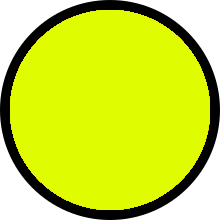Weather in January in Bosnia and Herzegovina
Planning a trip to Bosnia and Herzegovina this January? Here's what you need to know about the weather:
What is the weather like in Bosnia and Herzegovina in January?
January in Bosnia and Herzegovina generally has cold temperatures, with precipitation levels ranging from moderate to heavy. January falls during the winter season.
Temperatures
The average maximum temperatures are cold and range from 3°C in Kupres to 11°C in Neum. Nighttime temperatures generally drop to 3°C in Neum and -5°C in Kupres. On average, January is the coldest month of the year in Bosnia and Herzegovina. So be prepared and make sure to pack winter cloths.To learn more about the conditions in specific areas of Bosnia and Herzegovina, check out the map below.
Precipitation
In January, precipitation varies across different areas. From moderate snow/rainfall in Dvorovi with an average of 54 mm to heavy snow/rainfall in Ivanica with 167 mm.Average sunshine
Sarajevo experiences limited sunny days, amounting to roughly 56 hours of sunshine. This makes it perfect for those who prefer dimmer, cloudier settings rather than intense sunlit daysFor a more detailed look at Bosnia and Herzegovina's conditions throughout the year, check out our Bosnia and Herzegovina climate page.
Where to go in Bosnia and Herzegovina in January
 perfect weather
perfect weather
 pleasant
pleasant
 tolerable
tolerable
 unpleasant
unpleasant
 poor
poor
Select a Month of Interest
Check the conditions for any month of the year.
For a detailed overview over the year and the best time to visit Bosnia and Herzegovina, check out our Bosnia and Herzegovina's climate page.
Popular destinations
What is the weather like in January for the 5 most popular destinations in Bosnia and Herzegovina?
Sarajevo
In January Sarajevo generally has low temperatures with maximum daytime temperatures around 4°C, minimum nighttime temperatures around -5°C and moderate monthly snow/rainfall. So on average the conditions are poor that month.
 Max temperature
Max temperature
 Max temp
Max temp
 Min temperature
Min temperature
 Min temp
Min temp
Mostar
In January Mostar generally has low temperatures with maximum daytime temperatures around 7°C, minimum nighttime temperatures around -2°C and high monthly snow/rainfall. So on average the conditions are poor that month.
 Max temperature
Max temperature
 Max temp
Max temp
 Min temperature
Min temperature
 Min temp
Min temp
Međugorje
In January Međugorje generally has low temperatures with maximum daytime temperatures around 9°C, minimum nighttime temperatures around 0°C and high monthly rainfall. So on average the conditions are poor that month.
 Max temperature
Max temperature
 Max temp
Max temp
 Min temperature
Min temperature
 Min temp
Min temp
Trebinje
In January Trebinje generally has low temperatures with maximum daytime temperatures around 9°C, minimum nighttime temperatures around 2°C and high monthly rainfall. So on average the conditions are poor that month.
 Max temperature
Max temperature
 Max temp
Max temp
 Min temperature
Min temperature
 Min temp
Min temp
Banja Luka
In January Banja Luka generally has low temperatures with maximum daytime temperatures around 6°C, minimum nighttime temperatures around -2°C and moderate monthly snow/rainfall. So on average the conditions are poor that month.
 Max temperature
Max temperature
 Max temp
Max temp
 Min temperature
Min temperature
 Min temp
Min temp
Is your destination not in the list? Have a look at other destinations in Bosnia and Herzegovina.
Is January the best time to visit Bosnia and Herzegovina?
Given the typically poor weather conditions in Sarajevo, January may not be the ideal time to visit Bosnia and Herzegovina.
Generally speaking, July, August and September provide perfect weather in Sarajevo. The weather in January, February, March, November and December, on the other hand, tends to be poor.
Interested in more climate information?
We have much more information about the climate in Bosnia and Herzegovina.
Weather and climate has detailed information for every country in the world. Are you going to Bosnia and Herzegovina? Get detailed historical weather averages for many cities in Bosnia and Herzegovina.
Not sure yet where to go? We now have a tool which recommends destinations that suit your ideal travel conditions. Find out where to go with our weather planner.





